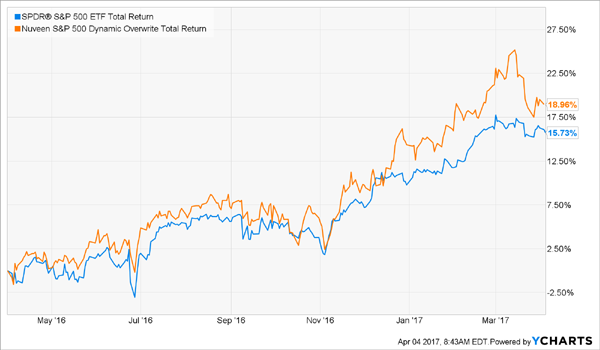The past year has been good for the S&P 500: it’s up about 15.7%, including dividends so if you’re simply tracking the index through an exchange traded fund, congrats. That’s a decent gain but I’ve got one simple trick—and a far superior fund buy—that can help you do even better … and grab a big chunk of your gain in cash, too. That trick? Covered calls.
Written by Michael Foster (ContrarianOutlook.com)
Covered what? Covered calls are a strategy in which investors buy stocks and sell call options against those stocks.
Think of call options as a kind of insurance; investors buy them if they are short the market and want to protect themselves from blowing up in case the market rallies. If you sell those options to investors, you’re essentially becoming an insurer, giving these gamblers the protection they crave to cover their risky bets…
Selling call options doesn’t always produce a higher return than just betting on the stock market but it does work at times when volatility is high and investors are growing more and more twitchy. Times like, say, when Washington threatens high trade barriers, and a much-promised overhaul of the nation’s tax system looks like it’s on thin ice.
This is precisely why the Nuveen S&P 500 Dynamic Overwrite Total Return Fund (NYSE: SPXX) has delivered a much higher total return than the S&P 500 SPDR ETF (NYSE: SPY), the benchmark for the index as a whole, since November:
Selling Insurance Is Good Business

Notice how the two funds rose in lockstep before the election, with SPXX slightly outperforming SPY. That’s because SPXX is long the S&P 500, just like SPY, but it gets extra income by selling call options against its holdings.
Interestingly, we don’t see the same thing happening when it comes to the biggest of the big-cap stocks. The SPDR Dow Jones Industrial Average ETF (NYSE: DIA) has pretty much had the same performance as its call option–selling peer, the Nuveen Dow 30 Dynamic Overwrite Total Return Fund (NYSE: DIAX), in the last 12 months:













Leave A Comment